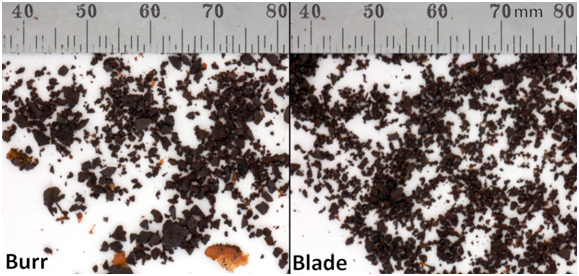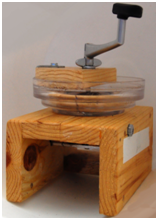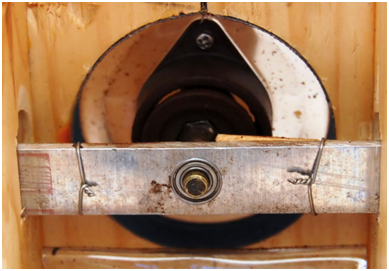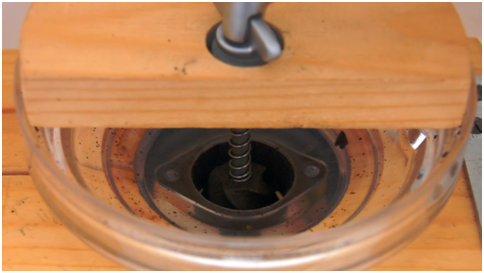Please, when you are shopping for a grinder, don’t believe anything you hear (except what I tell you…). A blade grinder is probably as good a grinder as you want to afford. Don’t presume that a burr grinder will automatically produce a more consistent grind. Take, for example, my manual burr machine. Compare the grind consistencies from my cheapo blade grinder with my burr grinder in the following picture. Neither is “consistent”, and the variation from the burr grinder goes from about 4 mm to dust. The blade grinder produces 1 mm to dust. Neither appears to produce a dominant particle.

You may want to cover your children’s eyes; even a brief look at this grinder could give them nightmares.

Detestitron is a heavily modified portable burr grinder. It was about $20, but it uses conical ceramic burrs and is quite ingeniously designed. The modifications I made to the original grinder maintain concentricity between the inner and outer cones, and facilitate holding the cursed thing to the table while turning the crank. The grind consistency, for all that, did not actually improve noticeably.
The Detestitron’s grind axle is centered in ball bearings. The original shaft was extended with a small brass rod, brazed on. The bottom bearing is fixed in an aluminum bar, which is in turn screwed to the chassis. Note that the center cone is not perfectly round, and so this keeps the grinder very stable—but it is not really centered.

The burrs are basically the same as you would see on a pepper mill, but much larger. There is a screw-like mechanism to force the beans into the narrow grinding slot.

Detestitron’s fundamental problem is that the length of the surfaces over which there is a consistent separation is very short—the coarser the grind, the shorter the overlapping length. I believe that any grinder with similar burrs would produce similar results. There are other designs, but they seem to start at about $200. Did I mention donations are welcome?
